The R&B hit by the Dixie Cups “Iko Iko” was released in 1965, but more than half a century later, it’s a mainstay of soundtracks and commercials.
As Performing Songwriter noted in 2018, the story behind the catchy a cappella classic is far lesser known than the song itself.
In 1965 New Orleans girl group The Dixie Cups were recording for Leiber & Stoller’s Red Bird Records in a New York studio. They’d finished “Chapel of Love” and during a break the girls began singing a song they’d learned from their mother called “Iko-Iko,” a call and response chant of a Mardi Gras Indian tribe. Group member Barbara Hawkins said: “We were just playing around with it during a session using drumsticks on ashtrays. We didn’t realize Jerry and Mike had the tapes running.” Leiber and Stoller later overdubbed bass and percussion along with the drumsticks on ashtrays, released it, and in 1965 it became the Dixie Cups’ final Top 40 record.
It turns out the song, originally titled “Jock-a-Mo,” was actually written in 1953 by James “Sugar Boy” Crawford. It tells of a parade collision between two “tribes” of Mardi Gras Indians. There’s a “spy boy” or “spy dog” (a lookout for one band of Indians) encountering the “flag boy” for another band. He threatens to set the flag on fire. Crawford told Offbeat magazine in 2002: “It came from two Indian chants that I put music to. ‘Iko Iko’ was like a victory chant that the Indians would shout. ‘Jock-A-Mo’ was a chant that was called when the Indians went into battle. I just put them together and made a song out of them. I was just trying to write a catchy song.”
When the Dixie Cups released the song in 1965, they didn’t know the origins of it, only that they’d heard their mother sing it.
Have you ever paid attention to the lyrics?
My grandma and your grand-ma were sit-tin' by the fire
My grandma told your grand-ma "I'm gon-na set your flag on fire”
Talk-in' 'bout, hey now hey now I-ko, I-ko, un-day
Jock-a-mo fee-no ai na-né, jock-a-mo fee na-né
Look at my king all dressed in red I-ko, I-ko, un-day
I bet-cha five dol-lars he'll kill you dead, jock-a-mo fee na-né
Talk-in' 'bout, hey now hey now I-ko, I-ko, un-day
Jock-a-mo fee-no ai na-né, jock-a-mo fee na-né
My flag boy and your flag boy were sit-tin' by the fire
My flag boy told your flag boy "I'm gon-na set your flag on fire"
Personally, when I first heard “Iko Iko” as a teenager, I knew some of what I was hearing sounded Creole, since I had lived in Louisiana, but I never thought about the lyric references to “flag boys” and “kings all dressed in red.” Mostly, I just liked the sound of the song. It wasn’t until years later, in 1976, that I met
Dr. Maurice Martinez; he’d made a short film,
The Black Indians of New Orleans, which made the connection for me.
“This classic award-winning documentary is the first definitive treatment of the origins and rituals of the Black Mardi Gras Indians of New Orleans, It features two tribes: The Yellow Pocahontas led by Big Chief Allison “Tootie” Montana, and The White Eagles, led by Big Chief Gerald “Jake” Milon. The first part of the film reveals the sociocultural history of the Mardi Gras Indians, their costume preparation, music, songs, dance and gatherings for a ritual practice. The second part is a sunrise to sunset visual account of the processions and street culture of the Black Indians on Mardi Gras Day.
“Iko Iko” remained part of my musical mindset, and in the late 1980’, my husband and I happened to befriend a guy named Mac. He turned out to be Malcolm John Rebennack, aka
Dr. John, and “Iko Iko” was one of the tunes he was best-known for.
RIP Mac.
No exploration of “Iko Iko” would be complete without The Neville Brothers, their roots in New Orleans, and their connection to Mardi Gras Indians, as Via Nola Vie noted in December 2018.
The Neville Brothers were raised in a family of six children in the Calliope Projects of New Orleans. Neither of the brothers’ parents were musicians, but they loved music and encouraged their children to play and listen to what ever they liked. Just like the city of New Orleans, the Neville family was inspired by French, African, Caribbean, Spanish, and American Indian backgrounds.
[...]
As children, the boys would find themselves on the corners of their neighborhood chanting local songs such as “Hey Pockey-Way.” During high school Art Neville’s’ band created the hit “Mardi Gras Mambo,” which is still very popularly used today during the Mardi Gras season. It was the Neville Brothers’ uncle, George Landry, who helped to bring the boys together to form their group. George Landry, or “Big Chief Jolly,” was a Mardi Gras Indian, and he wanted the Neville brothers to work on recording chants with him.
In a great interview with The Wall Street Journal in 2015, the brothers discussed the “Brother John” referenced in their medley “Brother John, Iko Iko.”
Cyril Neville : From the time I was 6, I always carried with me a paperback dictionary, pencil and paper. My mother insisted I learn to read early, so I wouldn’t stumble into death. Down in New Orleans in the ’50s, if you drank from the wrong fountain because you couldn’t read the sign that said “Whites Only,” you could wind up beaten or dead. In my teens, when I began singing and playing percussion, I’d use my pad to jot down things I heard that sounded interesting for songs. In the case of “Brother John,” I wrote the lyrics in the early ’70s with my Uncle Jolly [George Landry ]. They’re set to a song with an African rhythm that was popular with every Mardi Gras Indian tribe then. New Orleans is really the northern most point of the Caribbean, so the African, island flavor has always been there. James “Sugar Boy” Crawford was first to popularize this rhythm on his 1954 hit “Jock-a-Mo.” I wrote “Brother John’s” lyrics with my uncle as a tribute to a friend—John “Scarface” Williams—who had been killed a short time earlier.
Aaron Neville : I was close with Scarface when we were teens. He sang with Huey “Piano” Smith and the Clowns in the early 1950s and then with the Tick Tocks—significant R&B groups in New Orleans. Scarface and I hung out a lot at the Dew Drop Inn on LaSalle Street. One night in March 1972, he was stabbed trying to stop a fight in front of a club on Dryades Street. His death was a big blow, not only because he was a well-known musician but also because he was the Big Chief of the Mo Hawk Hunters and a friend of our uncle, Big Chief Jolly, who was chief of his Mardi Gras Indian tribe.
Cyril Neville: As a child, I was always curious about the Mardi Gras Indians. I used to follow Uncle Jolly [George Landry] all over town. Back then, all of the Indian tribes in the city’s wards sang the same songs but played the African rhythms differently, giving the songs their own flavor. I learned all the inflections just by tagging along with him. One day in the early 1970s, I was at my Uncle Jolly’s house, where he and four of his friends were sewing their Indian suits for Mardi Gras. I had written some lyric ideas on my pad: “He was a mighty friend with a heart of steel/ Brother John is gone / But he never would bow and he never would kneel /Brother John is gone.” My uncle read them and laughed, saying how much he liked what I had done. That was one of the proudest moments of my life.
Enjoy their “Iko Iko”-laced tribute to Brother John below, captured in an epic 1990 performance.
RIP: Charles Neville passed on in 2018. Art Neville passed in 2019, but their music will live on.
***
So who, exactly, are the Mardi Gras Indians? Matt Sakakeeny, writing for 64 Parishes, covers some of the basics.
Mardi Gras Indians are African Americans who form “tribes” that hold weekly practices in bars throughout New Orleans and then march through the streets on Mardi Gras Day and other recurring dates, when they wear elaborately hand-beaded and feathered costumes known as “suits.” In these public ceremonies, the Indians sing chants as they travel in search of rival tribes. When two tribes meet, the chiefs ritualistically compete with one another by shouting boasts and insults and displaying their individually styled suits. The Mardi Gras Indians, their suits, and their songs have all become recognizable symbols of New Orleans’s unique vernacular culture. Yet they remain more closely tied to specific communities and neighborhoods than more accessible local traditions such as jazz, Mardi Gras krewe parades, and Creole cuisine.
The precise origins of the Mardi Gras Indians are not known and remain hotly contested. Some Indians and researchers claim that the history begins with the intermixing of blacks and Native Americans during slavery, when many runaway slaves sought refuge with Houma, Chitimacha, and other tribes living in the swamplands surrounding New Orleans. Others have linked the first accounts of blacks masking as Indians to the visit of Buffalo Bill’s West Show to New Orleans in 1884–85. It is also unclear whether there is a direct relationship between the Mardi Gras Indian tradition and other ceremonial and musical masquerading traditions among African diasporic communities, such as the junkanoo parades throughout the Caribbean. However the Mardi Gras Indians emerged, the significance of the Indian warrior fighting clearly had a powerful resonance among former slaves and their descendants who were subject to Jim Crow laws.
This 64 Parishes video tells the Mardi Gras Indians’ story in their own words. Enjoy.
Michael Smith wrote about the year-round activities of the tribes for the Louisiana Folklife Program.
The "Mardi Gras Indian" tribes of New Orleans are, in fact, the oldest cultural organizations surviving from the original African tribes which were brought into New Orleans during slavery days. The tribes are particularly noted for preserving African "dress art" and musical heritage in the New World. The sewing and beadwork incorporated in Mardi Gras Indian suits, which are destroyed and redesigned each year, are widely considered to be the finest example of traditional African-American folk art in North America. Now long hidden in the Black ghettos of New Orleans, the Mardi Gras Indian tribes pursue cultural traditions, rooted in what they think of as a mysterious past, which despite being some 10 to 15 generations removed from their origin in Africa, still give them pride and serve to maintain their spirits against the dehumanizing effects of modern society. The social and cultural activities of the present day tribes continue all year around, and they endure as the carriers and preservers of a rich heritage.
The yearly cycle of activities for present day tribes culminates on Mardi Gras day when the various Indian gangs explode onto the streets "rocking and rolling" their way through the neighborhoods. Like small colonial armies on the march, a core of musicians play all sorts of drums and percussion instruments, speak in unknown tongues, and sing and chant dressed in elaborate African-American Indian costumes. During the day, they methodically hunt down other Indian gangs-some friendly gangs, in order to show off their new suits, and some not so friendly gangs, in order to show off their strength and power-all bringing back both the warrior spirits of Africa and the kindred spirits of Native American Indian people they came to respect and love.
The Mardi Gras New Orleans website has even more information about the Mardi Gras Indians, collected from Big Chief Larry Bannock, who passed away in 2014.
First up: How are the Mardi Gras Indians organized?
On Mardi Gras Day, if you're lucky enough to see some of the Mardi Gras Indians, the first Indian you're likely to see is the Spy Boy. His job places him ahead of the Big Chief's procession. Each Spy Boy has a method to signal potential trouble or approaching rival Indian tribes… with dancing, whooping, hollering, and hand language. His observations are communicated to the Big Chief who, in return, sends a set of directions and instructions back down the parade procession…
The Flag Boy is the next ranking Indian. It is he who carries the "gang flag" – a huge staff decorated with feathers and the gang symbol. Generally Flag Boys are a block or two behind Spy Boys, and at least a block ahead of the Big Chief. Their responsibility is to pass along Spy Boy's information to the Big Chief, and return the Big Chief's response back to the Spy Boy. By raising his gang flag high in the air and using prearranged signals, the Flag Boy is able to keep the Big Chief and Spy Boy in direct communication. This allows the Big Chief control over the direction of the route his tribe will take. As mentioned, the progression can be many streets long. "Second Liners" are always present between the ranking Indians. They are usually not costumed, but provide much entertainment as they follow along dancing, singing, beating drums and playing tambourines.
Next up, what about the masks and costumes?
Mardi Gras Indian Masking means designing /creating a new costume each year. Larry Bannock wears a hand-beaded and feathered suit of original design that weighs between 100 and 150 pounds. He wears this suit as he marches throughout the city on Mardi Gras Day, meeting the other chiefs along the way (see history). At times, he removes the heavier part of the suit, replacing it as he approaches another Indian Chief.
Making a new suit is time-consuming and must be planned carefully. An Indian's costume may take up to a year to complete, starting with the conception of an idea for next year's suit. Ordering material, designing layout, sewing and beadwork follow…
Typical of Mardi Gras tradition, rarely will anyone outside of the immediate family and close friends have an opportunity to witness a suit's creation before Mardi Gras

If there is one book that illustrates the breathtaking pageantry and social organization of black New Orleans, it’s Freedom's Dance: Social Aid and Pleasure Clubs in New Orleans, by Karen Celestan and Eric Waters.
In this pivotal book, the captivating and kinetic images of noted photographer Eric Waters are paired with a collection of insightful essays by preeminent authors and cultural leaders to offer the first complete look at the Social, Aid and Pleasure Club (SAPC) parade culture in New Orleans. Ranging from ideological approaches to the contributions of musicians, development of specific rituals by various clubs, and parade accessories such as elaborately decorated fans and sashes, Freedom’s Dance provides an unparalleled photographic and textual overview of the SAPC Second Line, tracking its origins in African traditions and subsequent development in black New Orleans culture.
Karen Celestan’s vibrant narrative is supplemented with interviews of longtime culture-bearers such as Oliver “Squirk” Hunter, Lois Andrews (mother of Troy “Trombone Shorty” Andrews and James Andrews), Fred Johnson, Gregory Davis, and Lionel Batiste, while interdisciplinary essays by leading scholars detail the rituals, historic perspective, and purpose of the Second Line. Freedom’s Dance defines this unique public-private phenomenon and captures every aspect of the Second Line, from SAPC members’ rollicking introductions at their annual parade to a funeral procession on its way to the crypt.
Visually dazzling and critically important, Freedom’s Dance serves as both a celebration and a deep exploration of this understudied but immediately recognizable aspect of the African American tradition in the Big Easy.
If you love photography, you need this book. Not only does it have the amazing work of longtime New Orleans photographer Eric Waters, but the narrative by Karen Celestan is riveting. Louisiana Weekly offers some insight on how the two came to work together:
Celestan, an executive writer and editor in University Advancement and an adjunct professor of English at Texas Southern University, first encountered Waters many years ago at Jazz Fest, and after Waters discussed his 40-year professional photographic career – especially his hundreds, if not thousands, of photos of second lines and other aspects of SAPC culture – Celestan knew she had to help Waters bring all the images together. “I said, ‘Oh Eric, you need to collect these and do a book,’” Celestan said last week. “So we kind of winnowed stuff down and placed things in categories.”
But then Hurricane Katrina struck, dealing the project a severe blow that knocked the authors off their track toward publication.But, Celestan said, they regrouped and became even more determined. “It actually made us more focused,” she said. Fifteen years later, the book was complete, and Waters and Celestan have been gratified with the result. In addition to chronicling the second-line tradition, the volume also reflects Waters’ photographic style and development. He picked up his passion in his late 20s. “I started late in photography,” he said – and was mentored by legendary photographer Marion Porter, who for decades shot for numerous local and national publications as well as New Orleans churches and unions. Porter’s tutelage proved fruitful for the young artist, who was inspired to train his lens on the many strands of the New Orleans cultural and social tapestry, including SAPCs and second lines.
“I just started photographing it,” Waters said. “It was just so amazing, and it’s been in me.” Waters added that the SAPC tradition that gave birth to second lining imbued the dancing with the very soul of New Orleans and the individuals who give it life. “When I do second lines,” he said, “I see a total abandonment and freedom in people.”
Syncopated Times offers an in-depth review of the work, calling it “this beautiful book.”
If you feel drawn to New Orleans street culture you have probably already seen a few of Eric Waters photographs. Taken at the intersection of art photography, journalism, and community memory they have sometimes even sparked debate within the community itself. He has been invited to document the black cultural societies of New Orleans for 40 years, the Social Aid & Pleasure Clubs, the Mardi Gras Indians, The Baby Dolls, and even the elusive Skull & Bones Gangs which may predate them all. He has captured in the process the incremental changes of fashion and behavior over time.
Some of his photographs are truly iconic. You can spot them in the opening theme of the HBO series Treme. Locally a photograph of a mother dancing on her son’s coffin as it was marched in a jazz funeral sparked internal debate about the raison d’être of Second Line.
That mother, Lois Andrews, is interviewed for this beautiful book. She was raised and has lived immersed in the musical and parading culture of the city and her son, “Trombone Shorty”, has become one of it’s most well-known ambassadors. Her memories are collected along with a dozen or so other interviews and essays, providing a reading experience that is at once scholarly and entertaining.
***
One of the most revered chiefs in New Orleans was Big Chief Allison "Tootie" Montana.
Montana was named a 1987 National Heritage fellow by the National Endowment for the A...
Allison "Tootie" Montana was born December 16, 1922, in New Orleans, Louisiana. His father, Alfred Montana, was a baker. He served as Big Chief of the Yellow Pocahontas Mardi Gras Indian tribe from the 1920s until 1941,when World War II forced the cancellation of the carnival. After the war, Tootie began masking with the Eighth Ward Hunters, and in 1947 he became Big Chief of the Monogram Hunters, a tribe he founded with some friends. In 1956, Montana married Joyce Francis, who never masked herself, but who has helped Tootie make his costumes, which might cost several hundred, and even thousands, of dollars to make.
Renowned New Orleans poet, writer, filmmaker, and scholar Kalamu Ya Salaam wrote an essay about Montana, originally published as an exhibit catalogue by the New Orleans Museum of Art for the 1997 exhibit "’He's the Prettiest:’ A Tribute to Big Chief Allison ‘Tootie’ Montan....”
On an individual or micro level, more so than any other currently active Mardi Gras Indian, Allison Marcel Montana personifies both the richness and complexity of the New Orleans Mardi Gras Indian tradition. Born December 16, 1922, and nicknamed Tootie by his beloved cousin Bea ("my mother's first cousin") when he was very young, Montana's Mardi Gras Indian heritage stretches back through his father and his grandmother's brother.
Montana's great uncle, "B.K." (sometimes called "Becate") Batiste, was the legendary founding Big Chief of the Creole Wild West, widely celebrated as the first Mardi Gras Indian tribe. Montana's father, Alfred, was a Big Chief of the Yellow Pocahontas, a tribe which grew out of the Creole Wild West.
Moreover, at seventy-four, Big Chief Tootie Montana is the oldest continuously masking Mardi Gras Indian in New Orleans. He began masking on his own in 1947 and continued for forty straight years before taking a one-year break after Mardi Gras 1986. In 1988 he resumed and capped his long tenure as Big Chief of the Yellow Pocahontas with a decade-ending last March this past Mardi Gras 1997.
In 2005, tragedy struck the Montana family, and the Mardi Gras Indians community as a whole.
On June 27, the night of Mr. Montana's death, the City Council convened a hearing to address reports of police harassment on March 19, St. Joseph's night, which Mardi Gras Indians consider sacred. Mr. Montana, a small man, stepped to the lectern and asked other chiefs in the room to stand behind him. He said that historically, the police had treated Mardi Gras Indians roughly. "I want this to stop," he said, looking directly at the Council and top police officials. He then collapsed and was taken to a nearby hospital, where he was pronounced dead of a heart attack.
Big Chief may be gone, but he’s far from forgotten.
As Jazz Crawl Productions notes on YouTube, Montana’s legacy lives on through his son.
Darryl Montana leads a Mardi Gras Indian celebration to honor his father, Big Chief "Tootie" Montana. The prayer "Indian Red" is a traditional anthem most "Black Masking" tribes sing before venturing into their neighborhoods to find other tribes on Mardi Gras Day. The celebration kicked off Carnival season at Louis Armstrong Park in New Orleans on King's Day 2020.
Here is a great interview with Darryl Montana, a Big Chief in his own right, who was himself honored a decade after his father’s passing.
As Art Council New Orleans notes, the younger Montana is committed to guiding future generations.
Big Chief Darryl Montana of the Yellow Pocahontas “Hunters” Black Indian tribe as a fourth generation Black “masking” Indian. Big Chief Darryl, youngest son of Allison “Big Chief Tootie” Montana, is a 2014 United States Artists Glasgow Fellow and a 2012 Joan Mitchell Foundation Painters and Sculptors Award recipient. He has instructed over 1,000 students through programs like the Xavier University Mardi Gras Indian Summer Arts. In 1995 Montana and his wife, Sabrina Mays-Montana founded Faces of Culture / Allison Montana Institute of Art, Culture and Tradition, a multifaceted nonprofit of cultural preservation.
If ever you get a chance to visit NOLA, make sure to visit the Backstreet Cultural Museum!
Located in the Treme section, the oldest African-American neighborhood in the United States, is the Backstreet Cultural Museum where visitors find an amazing assortment of memorabilia indigenous to Mardi Gras, jazz funerals and other traditions found only in New Orleans.
The Backstreet Museum, once the home of the Blandin Funeral Home, houses the city’s largest collection of Mardi Gras Indian costumes. These brilliantly colored and elaborately designed costumes are hand made by local artisans. Each costume boasts thousands of beads, shells, rhinestones, sequins and feathers and takes a year to make. Costing upwards of $10,000 a piece, the costumes are artistic treasures.
Can’t get there? One traveler shared her recent visit to New Orleans on Twitter.
To ensure the tradition does not die, The Red Flame Hunters, an all-youth Mardi Gras Indian Tribe, was organized by Ed Buckner to pass it on to a new generation.
That brings us to the second line. Not exclusive to, but inclusive of the culture of the maskers, it’s a tradition that has a long history in New Orleans.
Second lining has been called "the quintessential New Orleans art form – a jazz funeral without a body.” Historically, the African-American community began second lines as neighborhood celebrations. The neighborhood organizations offered social aid to freed slaves, such as loans and insurance, and used the second-lines as a form of advertising. Second lines were also used to honor members who died in their community, which launched the idea of second lines at funerals. Often, Mardi Gras Indians were and still are included in the procession.
Percussionist Bill Summers narrates this short documentary, The Second Line
For a more detailed look at this New Orleans tradition with historic African roots, I suggest Jazz Religion, the Second Line, and Black New Orleans After Hurrica..., by Richard Brent Turner.

An examination of the musical, religious, and political landscape of black New Orleans before and after Hurricane Katrina, this revised edition looks at how these factors play out in a new millennium of global apartheid. Richard Brent Turner explores the history and contemporary significance of second lines--the group of dancers who follow the first procession of church and club members, brass bands, and grand marshals in black New Orleans's jazz street parades. Here music and religion interplay, and Turner's study reveals how these identities and traditions from Haiti and West and Central Africa are reinterpreted. He also describes how second line participants create their own social space and become proficient in the arts of political disguise, resistance, and performance.
James R. Goff Jr’s review of the book in Southern Quarterly also tackles second line history.
One of the most fertile areas of historical scholarship related to the South has focused on identifying African retentions within black southern religion and culture. Richard Turner's Jazz Religion, the Second Line, and Black New Orleans combines the work of a number of recent scholars with his own personal story to highlight New Orleans' unique religious culture and its connections to West African dance and music traditions as well as Haitian Vodou rituals. Throughout he focuses on the second line-the somewhat impromptu procession of singers and dancers who follow the first line of official church leaders, club members, brass bands, and dignitaries that lead the city's numerous jazz street parades and funeral processions. By focusing on the second line, Turner seeks to uncover "how African diasporic religious identities and musical traditions from Haiti and West and Central Africa were reinterpreted over time in New Orleans jazz and popular religious performances" (5). Significantly, second line participants enabled him to grasp the unofficial religious traditions that have survived generations of discrimination within the cultural diversity that only the Crescent City provided. That unique cultural setting, he concludes, resulted in a population with "an African diasporic spiritual life that interacts with Christianity but is largely unknown by the mainstream order because its communal rituals are performed by jazz musicians and initiates of secret societies and social and pleasure clubs".
Originating as far back as the mid-eighteenth century in what became the city's fabled Congo Square, public performances that drew from a mixture of African and Haitian dance elements provided continuity for a displaced population. By the twentieth century, such performances had emerged as the second line with elements of the past reinterpreted to provide new meaning in an age of discrimination. Similarly, jazz music, elements of which were birthed as part of the mechanism for surviving slavery, combined with the tradition of Indian masking to give meaning and value to a population seeking to survive in a changing world. This transition unfolded primarily in the late decades of the nineteenth century when Jim Crow segregation brought an end to the city's more complex racial system. The result was a "musical interaction between Afro-Creole, classically trained musicians who were thrown together with the uptown African Americans who played the blues and spiritual rhythms of black Baptist and Methodist churches by ear."
The second line remains the undefeated soul of NOLA, as KQED notes in this great video.
As noted on YouTube, there’s a reason why when we think of New Orleans, second lines aren’t far behind.
When the average person thinks of parades in New Orleans, they're probably thinking of the Mardi Gras processions that attract hordes of tourists every Carnival season. But for locals, it's all about the second line, which fill the streets with joyful dancing and live brass bands every Sunday, ten months out of the year.
“You could have six bad days, Monday through Saturday, and get up Sunday and go to a second line, and you’re gonna forget,” says Rodrick “Scubble” Davis, a second line dancer known for his exuberant, athletic footwork. “Just that one day will make your whole week.”
Scubble grew up in the historic African-American neighborhood Tremé, known as the birthplace of jazz and center of second line tradition. Its parades took off after the end of slavery, when African Americans formed Benevolent Societies and Social Aid and Pleasure Clubs as a form of mutual social aid. Then, in the early 20th century, second lining merged with New Orleans’ burgeoning jazz culture.
Today, club members and their bands burst out onto the streets often wearing matching, brightly-colored outfits with elaborate hats and headdresses; they wave banners as the crowd parts to make way for them and their high-stepping dance moves. Scubble, a club member with the Tremé Sidewalk Steppers, was introduced to second-lining when he was four years old by his mother, and his love for it grew. “I was always a hyped-kid, couldn’t keep still, and anytime I heard the band, I was moving,” he says.
If you haven’t put your dancing shoes on yet, it’s time. Join the CTC Steppers as they celebrate their 20th Anniversary by parading through the 9th ward!
Happy Mardi Gras, wherever you are! Next week, join me at the intersection of Black History Month and Women’s History Month, for an exploration of forgotten black women—including the debunking of pervasive myths.




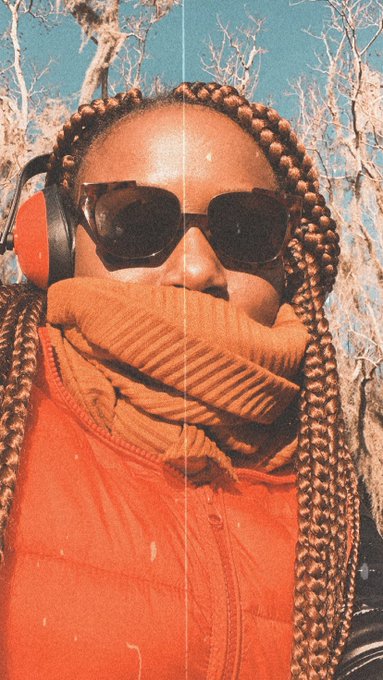
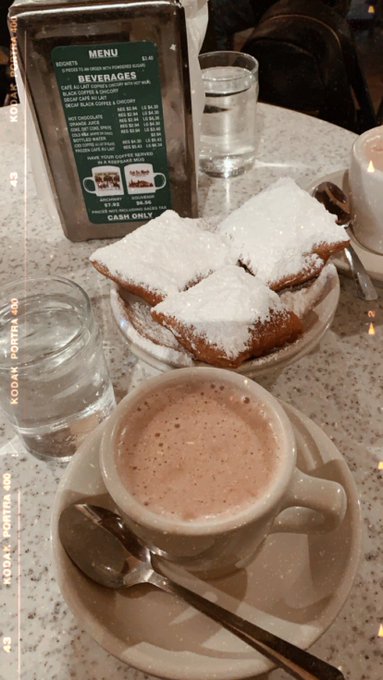
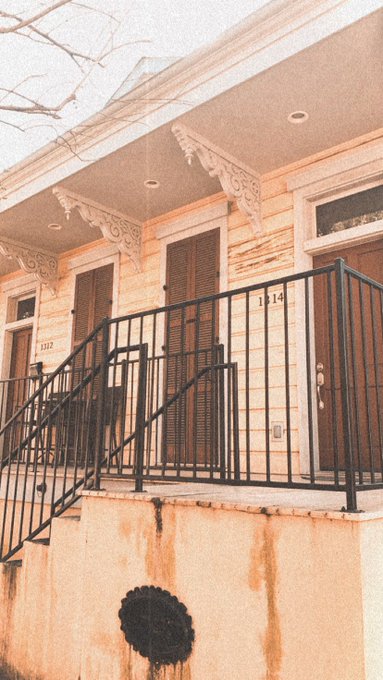
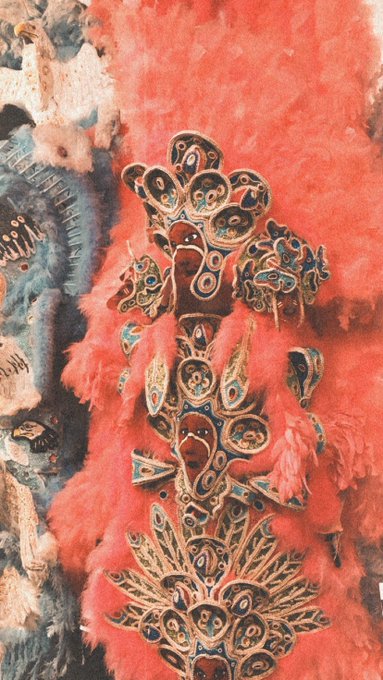

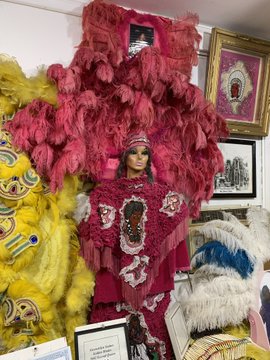
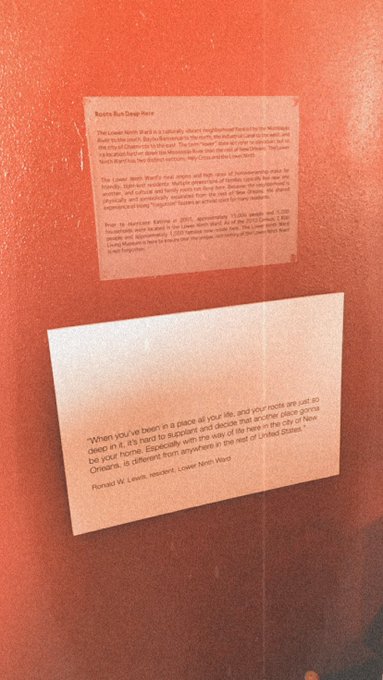

You need to be a member of Pittsburgh Jazz Network to add comments!
Join Pittsburgh Jazz Network